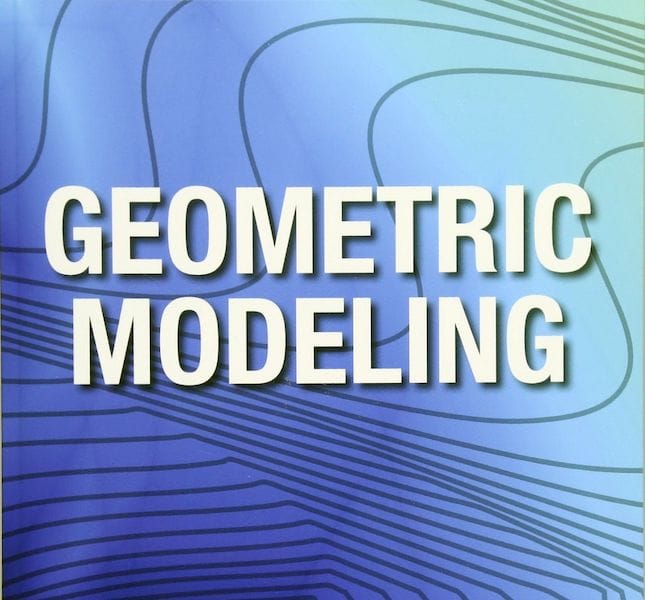![Geometric modeling ]Source: Amazon]](https://fabbaloo.com/wp-content/uploads/2020/05/geometricmodeling-ov_result_img_5eb099347874d.jpg)
This week’s selection is “Geometric Modeling: The mathematics of shapes” by Nikolay Golovanov.
3D printing would not be possible without 3D models, and 3D models would not be possible without the advent of 3D CAD systems to create them. Fortunately these days there are dozens of highly productive 3D CAD options to choose from, each specializing in a different aspect of CAD, be it ease of use, focus on particular applications or availability on specific platforms.
But one thing they all have in common is that CAD is derived from mathematics.
In particular, the mathematics used to create the 3D shapes we see on our screens when we develop 3D models. How exactly are these shapes formed? What arithmetic magic is used to build a smooth spline surface, for example? That’s what this book is about.
Golovanov has been with ASCON, a Russian company that produces a 3D CAD system called KOMPAS-3D, since 1994. His responsibility was to develop the core 3D engine of KOMPAS-3D, called C3D. This engine is the magic that creates the 3D shapes used in this CAD system.
As a result, Golovanov is well-suited to educate us on the matter of the mathematics of 3D creation. This is a subject rarely seen, as most of us simply make good use of the results, rather than understanding what exactly is going on behind the scenes.
From the book’s description:
“The book outlines the methods of geometric modeling, including methods for constructing curves, surfaces, and solids. It describes the algorithms and data structures of geometric objects. It also presents principles of interconnection between elements of a model. The book examines some applications of geometric models.”
You may wonder why we might suggest reading such a book, and that’s a fair question. The reason is that I’ve always found I make better use of any system once I have a general idea of how it’s being produced. If you can understand the underlying bricks that comprise the system, you can build better things, particularly if you run into problems.
That’s most often because you’re attempting to do something that doesn’t make mathematical sense, but don’t realize it.
But you might if you knew something about the mathematics involved.
Via Amazon











This week’s selection is “3D Printing Projects” by Dorling Kindersley, a.k.a. “DK”.